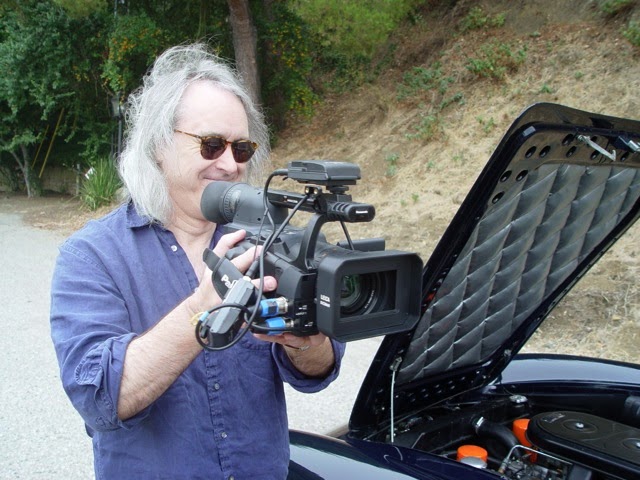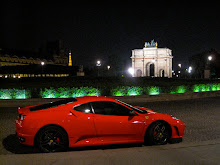
Sometimes one comes across a 'match made in Heaven' and it is recognizable from a mile away. Eduardo Renta and his Ferrari 330GTC is just such a match. Elegant, well presented and capable of holding one's interest are qualities shared by the man and his machine. Before heading out onto Mulholland Drive, Eduardo and I sat and talked for awhile at the Starbucks near the top of Beverly Glen and it was immediately clear that he understands his car and its place in the Ferrari line-up. His appreciation for its signature, vintage elements runs as deep as my own.

As we steered the Ferrari onto Mulholland followed by the Elysée Wednesday TV crew (Chad Glass, Jeanetta Dumouchel and Sean Mitchell on this occasion) the sound of the robust twelve cylinder engine brought back all the memories that one would expect. It was nervous and ready to run like any thoroughbred should be--and as with most Ferraris, you are always going slower than it wants to go.

When the 330GTC was first reviewed in the automotive press, it was generally held to be the best all-around Ferrari of the day combining performance and styling in a well-balanced package. Bill Harrah, whose Modern Classic Motors was the Western States Ferrari distributor (he was also a Nevada casino owner), chose one as his personal transportation. In fact, I believe that at least one magazine used Bill's personal car for its road test. The GTC is essentially a 275GTB with a four litre engine and its own unique, more restrained, styling.

It is easy to think of the GTC as a two-seater version of the 330 2+2 with regard to design and, I suppose, that's an accurate assessment. However, there are subtleties of design that make it a sublime variation on the theme first penned by Tom Tjaarda for the Series 1 2+2. It benefits greatly from the foreshortening and the proportions are far more aggressive than the photographs imply. The rear tumblehome creates a dynamic entirely lacking in the 2+2 and along with the reshaping of the headlights and grill, when seen in person, causes one to reevaluate the design giving it an upgrade in esteem.

It was interesting to hear everyone's opinions about the car when we parked on Mulholland to admire the car and take photographs. Chad offered comments as an artist about the design elements, Jeanetta likened the chrome trim--absent from modern machines--to the accessories worn by a stylish woman and Sean liked the combination of Ferrari sights and sounds so different from those of modern offerings.

As for my own impressions, the 330GTC has all of the characteristics that created the Ferrari legend and driving it puts one in a different world in a way other cars just cannot. The Ferrari is an experiential phenomenon that exceeds the consideration of aesthetics and performance--it takes you places both literally and figuratively. Soon, I will post extracts of this episode of Elysée Wednesday TV so you can get a sense of this car in action.

I want to thank Eduardo for generously sharing his Ferrari with us. I want, also, to thank Richard Mitchell of Black Horse Motors for making the introduction.
















































































